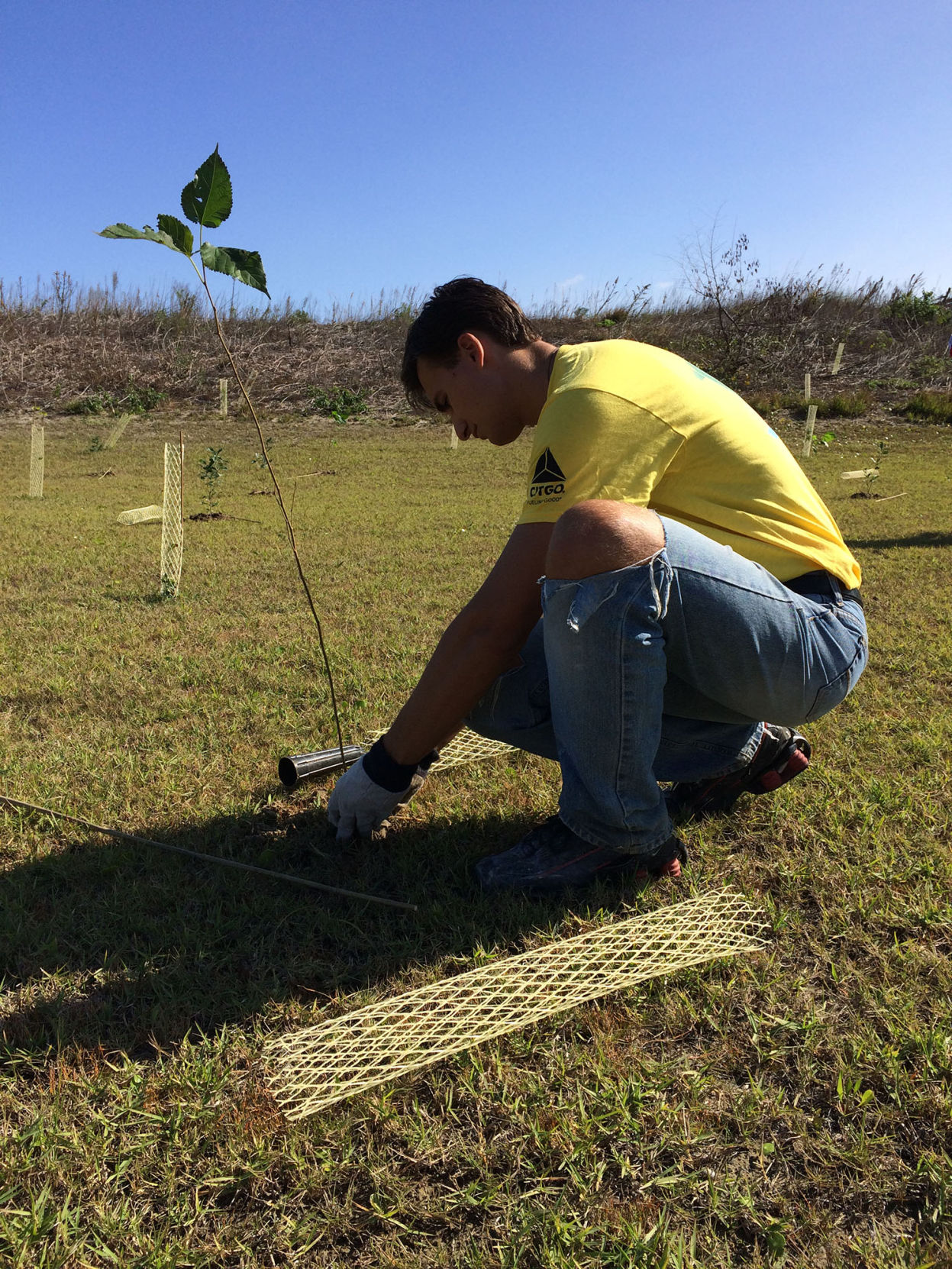
Jury convicts Houston officer in “Up Da Bayou Boyz” case in federal court
January 15, 2016
Tax refund pays for seminary school, but should it?
January 21, 2016A few more songbirds will have a safe place to land thanks to a volunteer project sociology majors at New York’s Union College completed in mid-December.
The students are examining the environmental problems that plague the country – including south Louisiana.
Fourteen students from the Schenectady-based liberal arts school worked side-by-side with the Barataria-Terrebonne National Estuary System to plant 1,000 live oak and mulberry trees in Grand Isle State Park. The foliage offers protection for neotropical migratory songbirds on their annual spring journey south.
Some 325 species follow the Mississippi Flyway, which crosses the Gulf of Mexico. The Grand Isle park serves as a vital refuge and resting point, Matt Benoit, BTNEP habitat restoration coordinator, said.
The two tree types – the evergreen live oak and fruit-bearing mulberry – were specifically purchased with CITGO funds for the park.
“(Live oak) is a very hardy tree,” Benoit explained. “These birds fly off the Yucatan Peninsula 400 or 500 miles across the Gulf of Mexico … and (they) are exhausted. They have what they call a fallout.”
A fallout is common after storms, when birds are faced with strong headwinds. The trees provide a safe resting place and needed protection. “You’ve got a lot of predators that come and get the birds,” Benoit said.
The purple mulberries help recharge the birds after their 24-hour trek across the gulf.
“A lot of these birds continue on the Mississippi Flyway all the way up into Canada,” he noted. “We’re just basically trying to provide them some habitat and some food for their journey.”
Union College sociology professor Janet Grigsby first visited New Orleans in December 2006, a year after Hurricane Katrina. Since then, the trip is a yearly affair.
“The hurricane recovery experience was so powerful that a number of us decided to come back,” Grigsby said of the annual two-week stay in a press release. Students volunteer in New Orleans and at the Dulac Community Center. The trip’s focus is teaching the importance of Louisiana’s coastal communities and the area’s wetlands.
“South Louisiana provides a great laboratory for study of sociological forces at work and the interface between environment and culture,” Grigsby said. “There is much work to be done still in recovery from the recent storms and the environmental challenge of saving the wetlands is enormous. So the decision to return each year has been easy.”
BTNEP’s mission thrives with help from Union College’s students and other like-minded people. Benoit said without volunteers, the work simply couldn’t get done.
“Our mission is to protect and preserve and, of course, we do that in many different ways with education, a lot of different publications, getting on a lot of different committees, doing water quality stuff,” the BTNEP coordinator said. “We’ve got a very small staff, really I’m the only plant guy and we have a public involvement coordinator, so we usually team up when these groups come in. Without their manpower we aren’t able to put these thousands of plants out into the habitats where we need it.
“Our problem is a national problem,” he added. “A lot of our projects are federal dollars and matching dollars that we use. You’ve got to have buy-in from the nation to deal with the scope of our problems. Having these people get educated on our land and the unique problems is beneficial because they can go back, they can tell their friends so they will be aware of our problems and our needs.” •
The trees serve as resting places for songbirds who traverse the Mississippi Flyway migration route each year.








